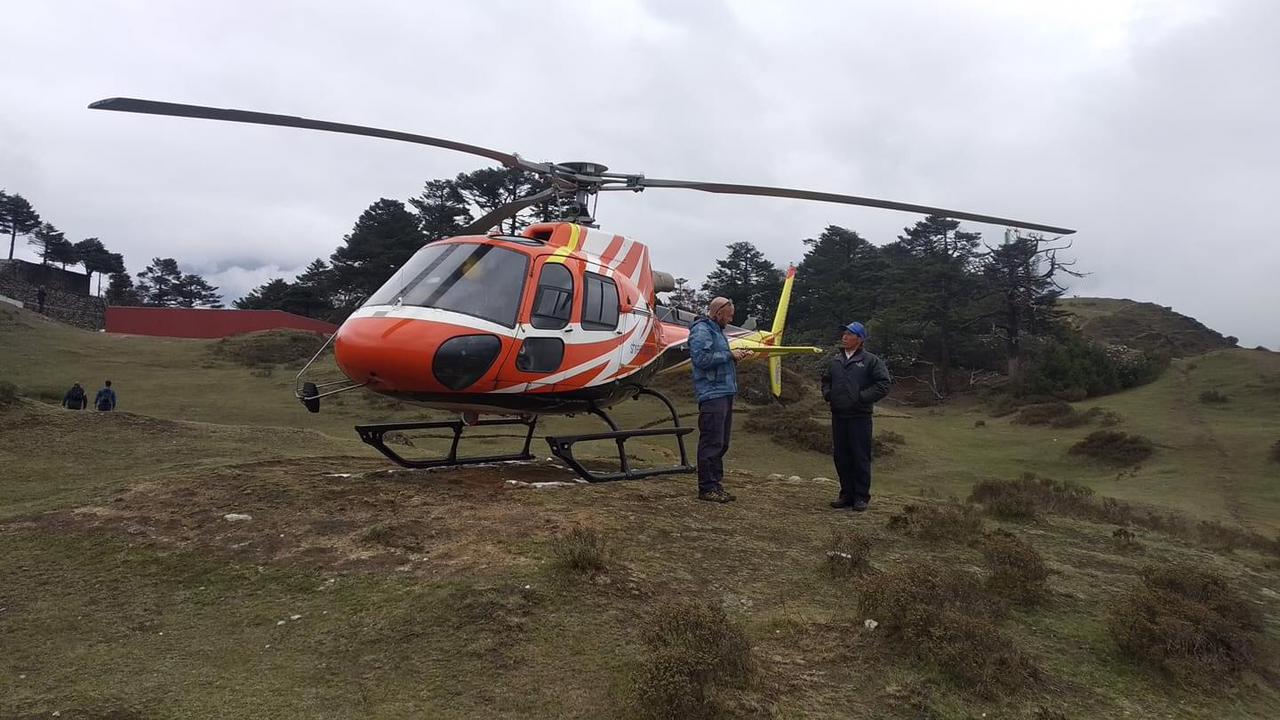
If we could fathom the scale of pollution in the Everest Region, we would shudder if the Tibetan name of this tallest mountain in the world- Chongmolungma, which translates as Holy Mother- is being profaned against by trekkers and mountaineers alike, or by the absence of environmental regulation. This polluting, unfriendly pursuit of scaling Everest also stands against a list of hundreds who have perished while mountaineering atop it. One might as well ask, could we avoid all the environmental desecration and such a death toll, only if we took a chopper to the top of Everest?
The Romantic Allure of Mountaineering instead of helicopter-ing to Everest
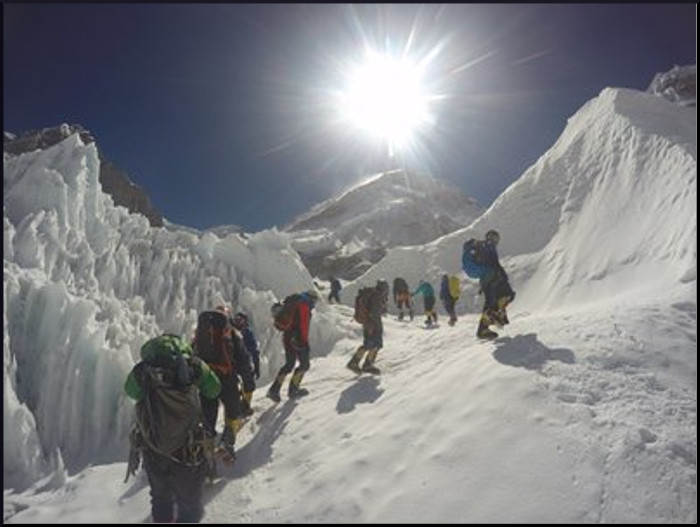
Indian Navy | WIkimedia Commons
Such is the panoramic icy slopes of Everest that they invite thousands of people who want a shot at the glory of climbing it, despite its more than visible risks. When touching upon the second deadliest disaster in Everest which took place in 1996, John Krauker- the expeditionist who survived this catastrophe– said:
“Getting to the top of any given mountain was considered much less important than how one got there: prestige was earned by tackling the most unforgiving routes with minimal equipment, in the boldest style imaginable.”
Humans are looking for a pulse that keeps them alive A check that death is around the corner gives us this sense of aliveness. Krauker expounds on this as he says:
“It was titillating to brush up against the enigma of mortality, to steal a glimpse across its forbidden frontier. Climbing was a magnificent activity, I firmly believed, not despite the inherent perils, but precisely because of them.”
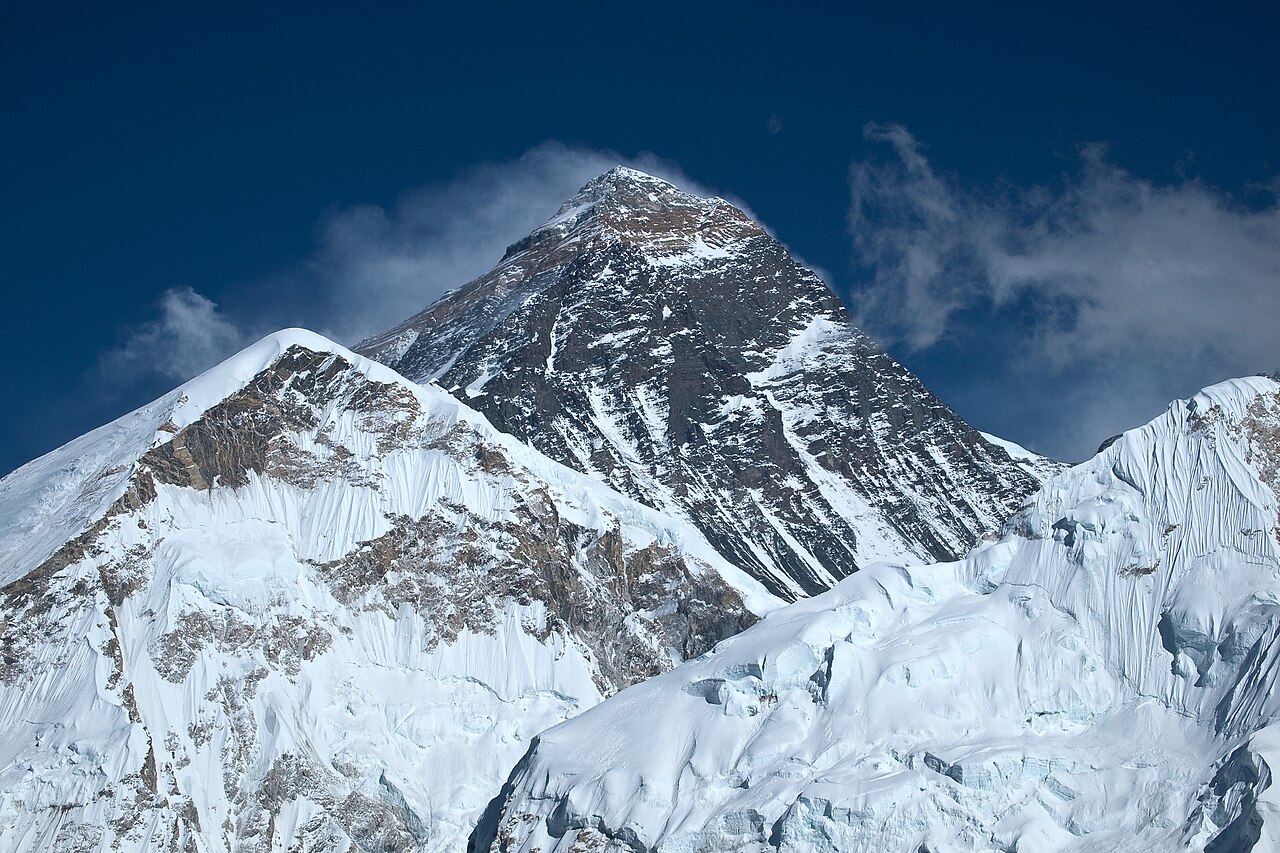
But what about the ones who can’t afford this romance?
Despite all the thrills of mountaineering to Everest, not everyone has the time to prepare for such an arduous ascent. With an increase in the number of people who take a helicopter to the Everest Base Camp instead of trekking to it, one is tempted to know if helicopters could carry some “hopeless romantics” (to use John Krauker’s phrase) to the top of Everest itself?
After all, sparing against strenuous climbs and years of training as a mountaineer is not something everyone can afford. So why not take a chopper instead? After all, there was a time when a helicopter landed on Mt. Everest. The pilot was a certain Frenchman by the name of Didier Delsalle who steered a Eurocopter AS350 B3 Squirrel to the summit of Mt. Everest, and you can watch a YouTube video of him doing just that.
But such a feat hasn’t been repeated. And the answer to whether we can reach Everest on a chopper is not so simple.
Considerations of the pilot who first took a helicopter to the top of Everest
The catch is that Didier Delsalle didn’t land the full weight of the helicopter on the summit. Only a flailing leg of the chopper was put at the top of the mountain, where he and his chopper stayed for 2 minutes. His elation of reaching the top was perfectly encapsulated in his own words:
“To reach this mythical summit definitely seemed to be a dream, despite the obvious difficulties of the target to be reached.”

Photo Credit: Airbus
One of the reasons why helicopters can land at the top of Everest is because they don’t have a designated helipad to land anywhere- if a pilot deems that he can land the chopper somewhere, (s)he can. Needless to say, there isn’t such a landing spot at the top of Everest.
But we’re not sure that every other person, along with a pilot can get there. The addition of a person can consume a lot of the chopper’s fuel and nobody can know beforehand whether the helicopter can thrust forward if the weight tips beyond a certain threshold.
Diving deeper into the time when the Impossible manifested
Didier Delsalle wrote a marquee page in aviation history when on May 14th, 2005, he landed a helicopter on the summit of Mount Everest. The triumvirate of human endurance, the extraordinary powers of modern aviation technology, and a whole lot of creativity were involved in this extraordinary feat.
Flight Preparations
In addition to having the sheer mental fortitude to overcome plentiful obstacles that Everest’s extreme altitude coupled with its unpredictable weather conditions brings, Delsalle also had to modify his chopper to make his historic flight a successful one. He did so by removing certain equipment placed inside the helicopter so that the helicopter became a tad lighter and its performance was bettered.
Getting rid of the non-essentials
- Passenger seats were redundant for his act, and he did lighten up the helicopter by getting rid of them.
- He also got rid of furnishings such as carpets and panels.
- Any spare parts, or additional systems that the chopper could do without were also left behind.
All of the aforementioned modifications helped the chopper to have an optimal power-to-weight ratio, thereby bettering its performance. This would allow Delsalle greater maneuverability in the thin air/ adverse conditions that are a part of Mount Everest’s immediate environment.
The Helicopter that landed at the top of Everest
Delsalle was flying an AS350 B3 Écureuil helicopter. His endeavor had to (and he did) cut across the ferocious winds capable of waywarding a chopper, freezing temperatures, and ridiculously thin veils of air.
When he touched down on the peak (and the sense was that a lot of purists would have abhorred this scaling), he was a tad above the altitude of 29,029 feet (8,848 meters) as he was perched in his pilot’s seat for two minutes. After that, he returned to the Everest Base Camp. Whilst on his way back from the summit of Everest, he was also able to rescue two Japanese climbers.
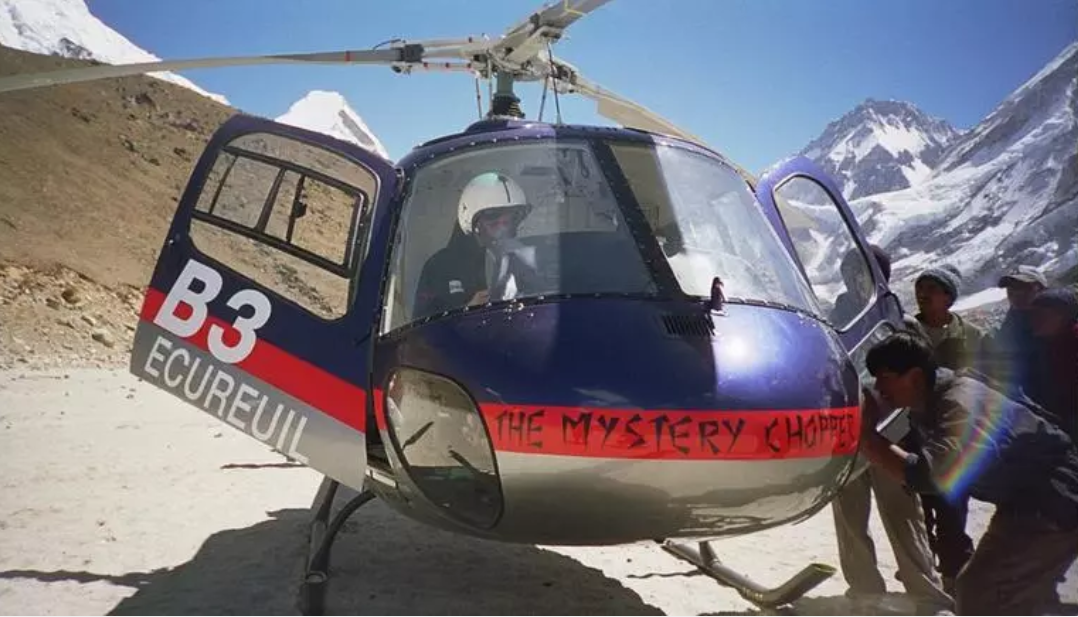
Photo: Airbus
His journey, which can’t be encapsulated in a paltry quote, can be reflected upon better in his words:
“I had some sleepless nights thinking it through. During the approach, I was so focused I had tunnel vision. But I arrived very gently and asked the mountain to accept me. It was like making a new friend.”
The Physics and Aerodynamics of Helicopter Flight:

Basic principles of helicopter flight dictate what is possible/ impossible for a helicopter to do. Helicopters cut across the gravity that binds them to the Earth through the power of rotation concentrated in their rotor blades. That’s how they generate lift. Pilots generally tweak around the pitch and angle of attack allowing a wide spectrum of ways a helicopter can vertically take off or hover.
However, reduced air density at high altitudes makes it difficult for a helicopter to generate lift. Debilitated oxygen levels also come in the way of crew safety and engine performance.
The Role of Rotor Efficiency:
As the rotor blades of a helicopter spin, they create a difference in air pressure above and below them. This gradient results in the generation of lift that allows a helicopter to take to the skies.
Talking to aviospace.org, helicopter pilot Surendra Paudel, who has performed various rescue missions in the Everest region, remarked that the rotor didn’t function well when choppers are taken to really high altitudes:
“If the air pressure outside a chopper is toned down significantly (as is the case in Everest’s high altitudes), the rotors have less substance to create the lift necessary for a helicopter to fly. A thinning of the air also cuts down on the efficiency of the rotor system. This results in a helicopter not being able to maintain a proper altitude nor can it be maneuvered well.”
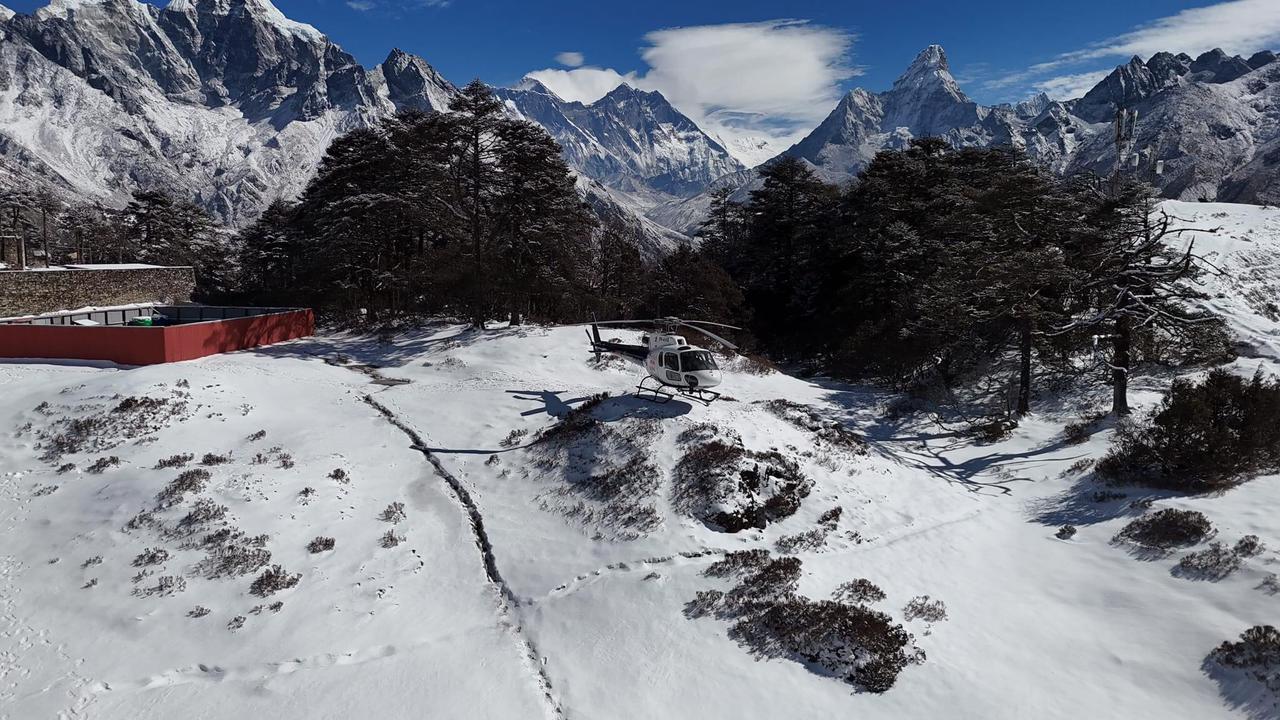
It is not only the reduced air density but also the extreme cold at the heights of Everest that affects the performance of a helicopter’s rotor. The frigid temperatures make the rotor blades stiffer, thus altering its aerodynamic properties.
Altitude Constraints on Helicopter Performance:
We also have to take into account the operational ceiling of helicopters. Density altitude denudes choppers of their power to climb. Altitudes above 8,000 meters (26,000 feet) are known as the “Death Zone”, and it is that oxygen levels are dangerously low. making it extremely hazardous for both crews, who are susceptible to hypoxia, whilst also altering engine performance.
No Areas for Emergency Landing
It is demoralizing to know there are no flat areas to for an emergency landing if a chopper runs into a mechanical or technical issue. Mountains are poor locations for runways and helipads: two things that allow a helicopter to land.
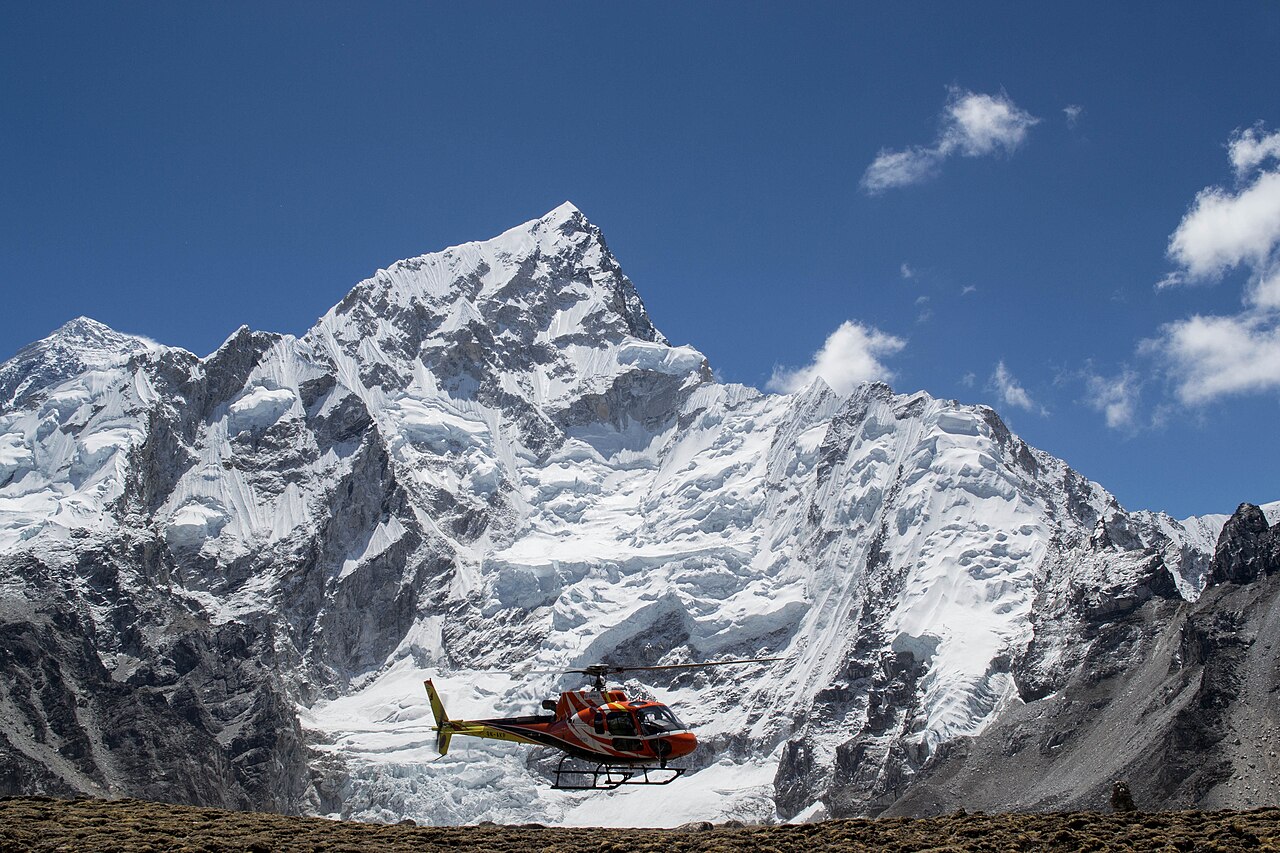
Additionally, Radar systems, which assure aviation safety and increase aircraft operational effectiveness, are not very developed in the Everest region because it is a sparsely populated area. Pilots are unable to contact the ground to report the current flight conditions due to the region’s nearly nonexistent radar system.
Problems in Oxygen Supply and Engine Performance:
The scarcity of oxygen at such heights is a double-edged sword, cutting both the crew and the engine’s performance. The life-giving air we require is in short supply, and the engine, too, gasps for breath. While modern helicopters are equipped with sophisticated systems to mitigate these concerns, the harsh conditions of Mount Everest demand an exceptional level of oxygen supply. Meeting this requirement becomes increasingly challenging as helicopters ascend to higher altitudes, pushing the limits of current technology and engineering capabilities.
Safety Concerns and Operational Risks:
A pilot who dares to take on Mt Everest in a helicopter, as well as the airlines that choose to fly there, are wary of the persistent danger of accumulation of ice and snow in a helicopter’s vital components. A pronounced lack of oxygen at/around the top of Everest can lead to a numbing of cognitive abilities, and fuzzy judgment, and the possibility of a fatality can’t be ignored.
White Out
In the unruly weather of Everest, white outs which can make a pilot blind to the surroundings, is on the cards. The Everest Disaster of 1996 which we touched upon at the beginning of the article was one such case.

Photo: Flickr | Internet Archive Book Images | Wikimedia Commons
In the Everest region, the choppers fly under visual flight rules and don’t have the guidance of an instrument landing system. So in case that snowy whiteouts make it impossible for a pilot to navigate, it will be extremely difficult for a pilot to get out of such a rut.
One can’t rule out unbearable wind
Everest, along with several other Himalayan peaks, is one of those mountains where high-altitude jet-stream-like winds blow. Such winds can reach speeds in excess of 200 miles per hour. Subtropical jet stream motion can cause a variety of weather conditions, from constant wind changes to monsoon rains. A chopper that dares to take on Everest might encounter such a wind, which carries seeds of fatality.
Search and Rescue Operations:
A compromised rotor efficiency and engine performance are two key factors that might limit safe search and rescue operations if a helicopter flies at the altitude of Mt. Everest. This is one reason why rescuing distressed/ injured/ stranded climbers that are quite close to Everest becomes a tad challenging. There often isn’t a patch that’s safe enough for the chopper to land.
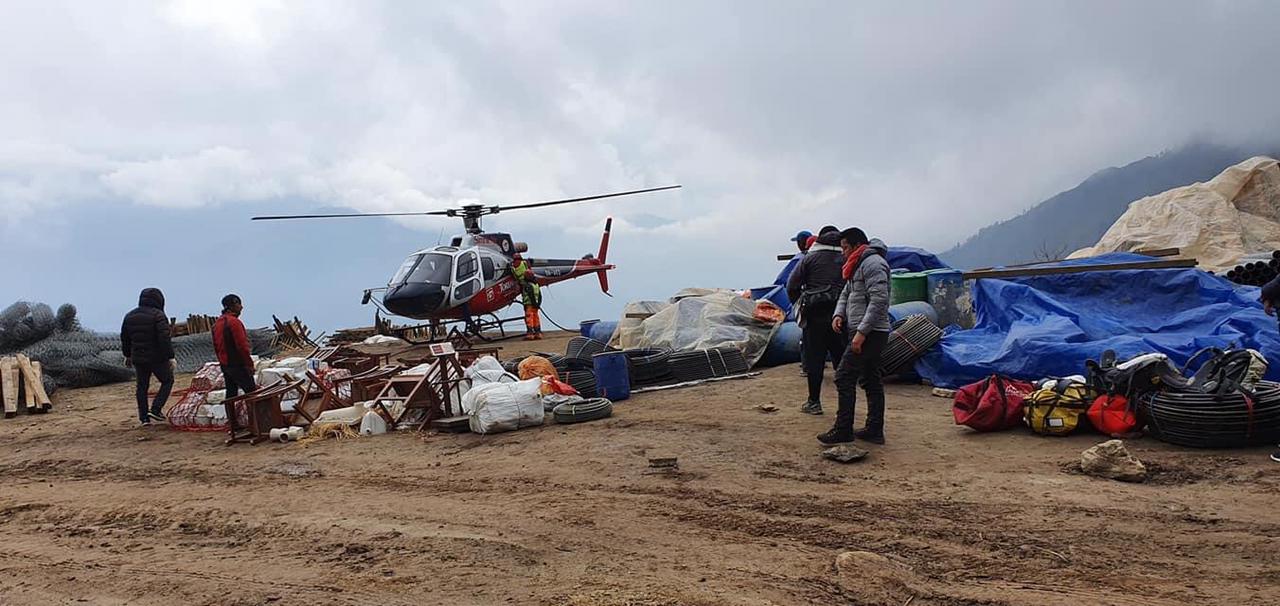
Narrow ledges, crevasses as well as steep slopes contribute to making take-off/landing in the Everest region treacherous, even for the most experienced pilots.
Blizzards, avalanches, and rapid wind often reduce visibility and increase accidents. These are the factors that also hinder swift communication between rescuers and the (potential) rescuees.
Conclusion
Equations from all of the correlated fields such as physics, aerodynamics, mechanics of a helicopter flight, and safety risks come into play while determining whether we could realistically, and repeatedly, take a chopper to the top of Everest. Given that Didier Delsalle’s feat hasn’t been dared to replicate again, we might say that landing on the summit, at least with the technologies we have right now, seems a task for the technologists of the future.
There is a plethora of impediments that are posed by Mt. Everest- nature’s grandest challenge- to helicopters. At least for now. If you’re a daredevil like Delsalle, a pilot might replicate his feat. But for people who are looking for a trip to the top of Everest much like a trip to the Everest Base Camp on a chopper, there’s no other option but to be involved in the patience game. And see if we can design better helicopters that might be able to take us to Mt. Everest.
Delsalle’s words might add to the depth of the conclusion:
“The thought of rescuing climbers was one of the things that motivated me to do this project. But the forces I encountered were so powerful that to guarantee a safe flight you’d have to design a more powerful copter.”
Frequently Asked Questions:
1. How much does it cost to take a helicopter ride to Mount Everest?
As we’ve said repeatedly in this article, it is, barring a staggering oddity, next to impossible to take a helicopter to Mount Everest.
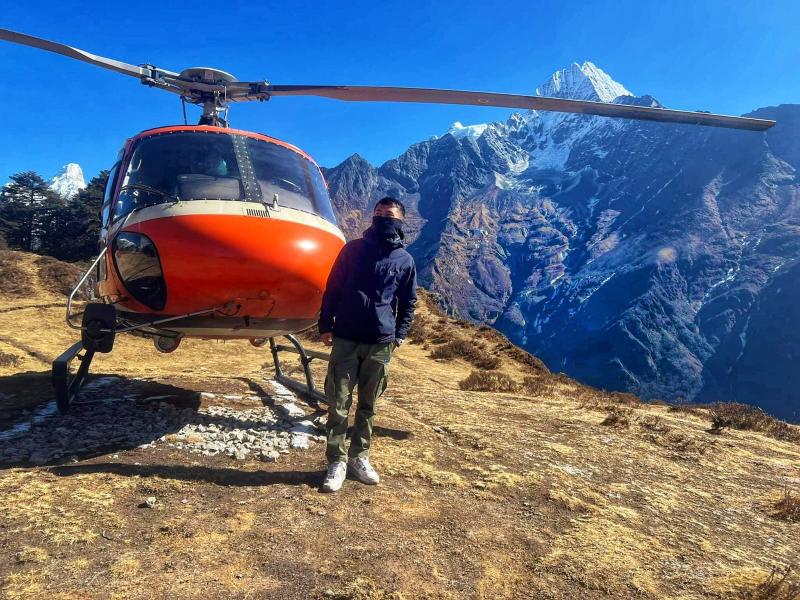
So, the cost doesn’t come into the equation. If you are looking for a chopper to take you to Mount Everest Base Camp, that is certainly doable.
2. Why don’t planes fly over Everest?
Aircraft do have the capacity to fly to 42,000 ft– at least that’s how high they are allowed to reach. This height is almost 12000 ft more than the height of Mt Everest (~29,000 ft or so). But planes don’t fly directly over Everest. This is because of the safety concerns we’ve discussed above such as the unpredictable weather pattern over Everest as well as the difficulty in emergency landing if something goes wrong.
3. What is the highest altitude a helicopter can fly?
Civilian and commercial helicopters have a maximum operational altitude that’s tucked between around 18,000 feet to 20,000 feet (5,500 to 6,100 meters). If a helicopter is to soar above these altitudes, they are bound to face some limitations such as reduced lift capacity, compromises on its maneuverability, and a significantly lower engine power output. But the highest altitude that a helicopter has touched it over 40,000 ft.
4. Why can’t helicopters save people on Everest?
All of the risky factors we have discussed above come into consideration when we are looking to save people on Everest. Captain Maurizio, an Italian captain, holds the record for the highest rescue operation in Everest as he saved the life of a person from 7800 meters.
In his words,
“7,000m is the upper limit of a helicopter’s certification…(The altitude )changes everything. It changes the way we fly, it changes the way the machine flies, it changes all the instruments – there are a lot of things to think about.”
5. How High Can Helicopters Get on Everest?
A French pilot named Jean Boulet holds the record for the highest helicopter flight. He reached the height of 40,820 feet (12,442 m) in an Aérospatiale SA 315 Lama in 1972. This gives you a very good idea that helicopters can fly well above Mount Everest. But just because they can doesn’t mean that they will take the chance of going to the top of Everest.
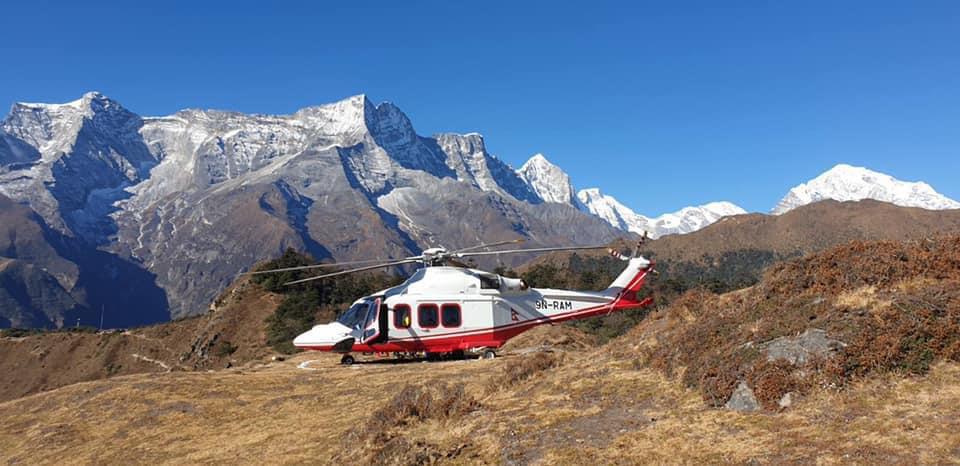
There has also been a clear instance when a man flew over the summit of Mt. Everest. He was the Duke of Hamilton and he achieved this feat in a Westland biplane in 1933. It is widely believed that the flight was paid for by a woman named Lucy, Lady Houston.
